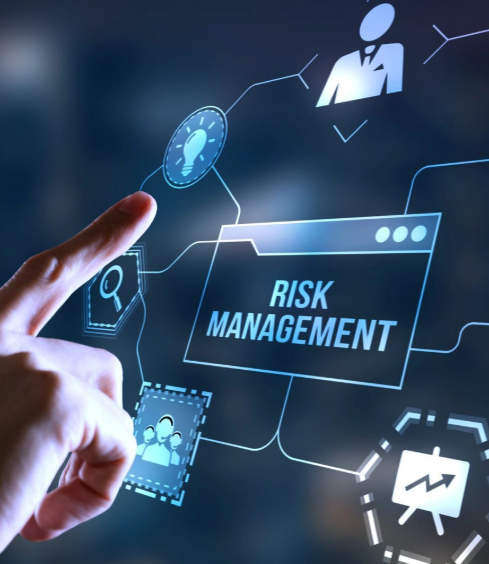Enhancing Supplier Risk Management with IT Risk Management Software

In today’s digital-driven world, managing supplier risks has become more complex and crucial. With global supply chains increasingly dependent on digital platforms, IT-related risks—especially around cybersecurity—are a growing concern. To protect sensitive data, ensure business continuity, and minimize disruptions, implementing IT risk management software is essential.
This article explores how IT risk management software enhances supplier risk management by providing key features, tools, and solutions for addressing digital threats in supply chains.
What is IT Risk Management Software and Why Is It Essential?
IT risk management software helps businesses identify, evaluate, and address risks linked to their IT systems and those of their suppliers. These tools are essential for managing risks related to supplier infrastructures, ensuring compliance with cybersecurity standards, and reducing vulnerabilities in the supply chain.
By integrating IT risk management software into supplier risk management strategies, companies can:
- Identify IT-related vulnerabilities in their supply chains.
- Assess supplier IT systems for compliance with cybersecurity standards.
- Mitigate risks using actionable insights and robust solutions.
Key Features of IT Risk Management Software
Effective IT risk management software includes the following features:
- Real-Time Risk Monitoring: Continuous tracking of supplier IT systems to identify vulnerabilities or breaches.
- Comprehensive Risk Assessment: Evaluate and prioritize risks based on their potential impact on the business.
- Compliance Management: Ensure suppliers meet regulatory standards and industry requirements.
- Incident Response Planning: Proactively prepare strategies to handle IT-related incidents.
- Data Analytics and Reporting: Generate detailed reports for informed decision-making.
These features make IT risk management tools crucial for modern supplier risk management approaches.
How IT Risk Management Tools Support Supplier Risk Management
IT Risk Assessment for Suppliers
IT risk management tools are commonly used in supplier risk assessments to evaluate the following:
- Cybersecurity Posture: Assess suppliers’ cybersecurity measures and their ability to fend off cyber threats.
- Data Management Practices: Ensure suppliers handle sensitive data securely and responsibly.
- IT Infrastructure: Evaluate the strength and reliability of suppliers’ technology systems.
By using IT risk assessment software, businesses can streamline these evaluations and quickly address any identified risks with high-priority suppliers.
Cyber Risk Management Solutions
Cyber risk management tools are designed to minimize risks like data breaches, malware attacks, and ransomware in the supply chain. These solutions:
- Provide encryption and secure communication for data sharing.
- Identify vulnerabilities in supplier networks and suggest improvements.
- Offer training to raise cybersecurity awareness among suppliers.
Organizations that adopt these tools can significantly reduce the chances of costly cyber disruptions in their supply chains.
Enhancing Supply Chain Visibility with IT Risk Management Tools
Visibility into supplier IT systems is critical for proactive risk management. IT risk management tools help businesses:
- Gain a full view of supplier IT systems and their interdependencies.
- Monitor potential risks across the supply chain in real time.
- Use predictive analytics to foresee and prevent future risks.
These tools enable organizations to enhance their supply chain resilience and security.
How IT Risk Assessment Software Improves Supplier Risk Management
IT risk assessment software plays a vital role in identifying and mitigating IT risks in the supply chain. Its key benefits include:
- Streamlined Risk Identification: Automates the detection of IT risks, improving efficiency and accuracy.
- Prioritized Risk Management: Uses risk scores to help businesses address the most critical issues first.
- Customizable Assessments: Tailors risk assessments to meet industry-specific requirements and ensure compliance.
- Improved Collaboration: Facilitates communication between organizations and their suppliers, promoting joint efforts to address IT risks.
Cybersecurity and Its Role in Supplier Risk Management
As supply chains become more digitized, cybersecurity has become a major concern for businesses. Cyber risk management solutions protect sensitive data, prevent unauthorized access, and reduce the risk of cyberattacks.
Key Cybersecurity Strategies:
- Implement multi-factor authentication and encryption to secure data exchanges.
- Regularly update IT systems and software to close security gaps.
- Conduct cybersecurity audits of suppliers to ensure adherence to best practices.
Benefits of Cyber Risk Management Solutions
Investing in robust cyber risk management tools offers several advantages for businesses:
- Enhanced Security: Protects against data breaches and unauthorized access.
- Operational Continuity: Minimizes disruptions caused by cyber incidents.
- Regulatory Compliance: Ensures compliance with global cybersecurity regulations, reducing legal risks.
These benefits strengthen supplier relationships and make the overall supply chain more resilient.
Choosing the Right IT Risk Management Software
When selecting IT risk management software, consider these factors:
- Scalability: Ensure the software can handle your current and future supply chain needs.
- Integration Capabilities: Choose tools that seamlessly integrate with existing systems like ERP or supplier management software.
- Ease of Use: Opt for software with user-friendly interfaces and intuitive dashboards.
- Customizability: Look for software that can be tailored to meet your specific risk management needs.
- Vendor Support: Ensure the software provider offers reliable customer support and regular updates.
The Future of IT Risk Management in Supplier Risk Management
As the IT risk landscape continues to evolve, emerging trends are shaping the future of risk management:
- Artificial Intelligence (AI): AI tools for predictive analytics and automated risk detection are improving the efficiency and accuracy of IT risk management.
- Blockchain Technology: Blockchain enhances supply chain transparency and security by providing decentralized, secure tracking of supplier performance.
- Cloud-Based Solutions: Cloud platforms offer scalable solutions for managing IT risks remotely and improving collaboration across teams.
Conclusion
IT risk management software is a crucial element of modern supplier risk management strategies. From identifying vulnerabilities to implementing cybersecurity measures, these tools support businesses in managing IT-related risks within their supply chains.
Investing in the right IT risk management software helps businesses maintain resilience, comply with regulatory standards, and protect sensitive data. By adopting advanced risk management solutions, organizations can successfully navigate the complexities of supplier risk management in an increasingly digital world.


 English
English 












































































































































































































































































































































































